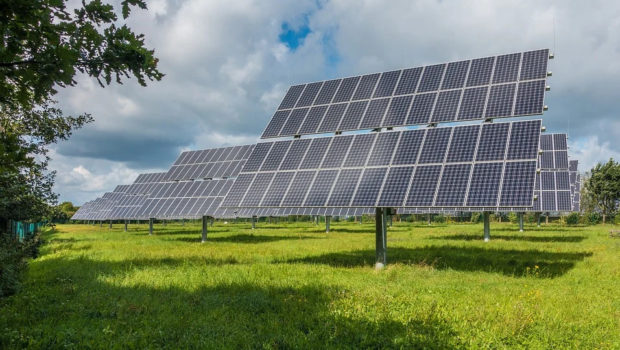Benefits of Solar Panel – 2021 Guide
Solar panels are becoming increasingly important in our day to day, allowing a multitude of uses and applications. This article will tell you below everything you need to know about solar panel installations. Solar panels have more and more prominence in our lives. The energy transition is promoting the use of alternatives that help lower the carbon footprint. In addition, solar panels have a multitude of uses, both at home and in industries.
What are Solar Panels and How do they Work?
The operation of solar panels by CHINTcan be complicated. However, solar panels or modules are nothing more than devices made up of photovoltaic cells, whose main function is to transform solar energy into electrical energy. The operation is as follows:
Photovoltaic cells capture photons from the sun and thanks to the semiconductor material from which they are made, silicon, they transform photons into electrons. The current generated by the solar panels is continuous, so it has to be transformed into alternating current through a solar inverter, since most of the energy consumed on a day-to-day basis is alternating.
What is a Solar Panel Made of?
In addition to photovoltaic cells, solar panels are made up of:
- The electrical connection between cells
- Encapsulants, which are usually EVA – ethylene vinyl acetate. This forms a sealing layer around the solar panels. It is very important, as it protects the photovoltaic cells.
- Tempered glass or crystal, which together with the encapsulant protects the photovoltaic cells.
- PVC sticker, found on the back of the solar panels.
- Aluminum frame with fixing hole
In addition to the elements that make up a solar panel itself, a photovoltaic system is also formed by the structure where the modules are attached, the wiring, the inverter that transforms direct current into alternating current and, if applicable, batteries for solar panels.
The Main Types
Solar panels are of various types. In principle, a distinction is made between:
- Monocrystalline
- Polycrystalline
- Amorphous
Of all the types of solar panels, the highest quality modules are the monocrystalline ones. These are made up of cells composed of a single silicon crystal, which offers greater efficiency. On the other hand, amorphous ones are the least recommended, since the technology they use is obsolete and the performance of the plates is inferior.
Transparent Solar Panels or Photovoltaic Glass
In addition to the classic solar panels, technological advances have led us to the creation of transparent solar panels or photovoltaic glass.
Transparent solar panels are not designed to replace solar panels, but are a complement to take even more advantage of solar energy.
They can be applied to windows, both in buildings and vehicles, mobile phones or even urban furniture.
It is true that they do not reach 5% efficiency, but there is still a lot to do since the potential of this technology could reach unsuspected levels, reaching 100% of energy demand if we combine it with the solar panels that we currently know and we install on the roofs of our homes. Although transparent solar panels do not reach the efficiency achieved by the solar panels that we find in the current market, the union of both technologies will produce a greater amount of efficient electricity.
Solar Panels that Work at Night
Of the latest in solar energy, but still to be developed and like photovoltaic glass, they come as a support to the classic solar panels; it is worth highlighting the solar panels that work at night.
These modules take advantage of the heat that the ground gives off at night, converting it into energy. The creators of the technology have shown that the plates are capable of making an LED work with the energy produced.
The Dimensions of the Solar Panels
Returning to the most useful solar panels, one aspect that must be taken into account is their size. Solar Panel Installers Brisbane, Searose advises that the size of the solar panels is determined by the number of cells that make up the panel. In this sense, the most common in residential use are 60 cells, arranged in 6 rows of 10 cells. This type of solar panels has a size of 164cm x 99cm.
On the other hand, those for industrial use have 72 photovoltaic cells, which raises the size of the solar panels to almost 2 meters x 1 meter. In addition, although less common, there are also solar panels with more than 72 cells.
The difference in size between a panel for residential use and one for industrial use is given by the power required in each case. Well, an industrial warehouse will need a greater amount of energy to consume itself than a single-family home, and it allows working with larger panels. For residential use, the optimal and recommended size is 60 cells.
Power and Performance
The power and performance of photovoltaic solar panels are determined by:
- The type of cells
- The number of cells that make up the module
- Solar radiation and the climate of the area where the system is installed.
Although the performance of a solar panel depends on all these elements, the key element in electrical power is the photovoltaic cells.
A photovoltaic cell can produce between 0.5 and 0.6 volts. To determine the power of a panel, you only have to multiply the number of cells with the power of each one.
If on average they produce, say 0.6 volts per cell, the electrical power of a 60 cells solar panel will be 36 volts.
At CHINT, they work with solar panels of 340W, 380W and 400W. Although we recommend the use of the most powerful panels for greater profitability in the long term, we install the 340W panels to any customer who wishes.
How to Know How Many Solar Panels you need
To know how many solar panels you need, it is enough to know the electricity consumption of your home and cross it with the power of the solar panels.
If we do the exercise for a bill of € 100 per month and a solar panel with a good production capacity, we find:
A solar panel is capable of producing up to 500W. A bill of approximately € 100 per month translates to an average of 5,000W. Therefore, if your bill is around € 100 per month, it is most likely that the ideal size of your installation is 10 photovoltaic modules. This is still a very rough estimate. For a professional installation, it is necessary to study your bill and size according to your actual consumption. In the case in which the installation is isolated, more boards will be needed to be able to generate more energy that will be stored in the batteries to have an uninterrupted supply.
Does it Make Sense to Mount More Boards than Necessary?
Not at all, regardless of whether or not you are connected to the grid, the main idea is to save with a photovoltaic self-consumption system. In the case of isolated installations, the solar panels have to produce as much energy as the house will consume. However, you have to think that much of the day energy consumption is minimal in a common single-family home and that the solar panels will be producing energy that will be stored in the batteries all this time, even on the days when the home is empty.
On the other hand, if the installation of solar panels is connected to the grid, although compensation can be obtained, if the amount of excess energy produced exceeds that consumed from the grid in price, it will not be compensated, resulting in a loss. of production that is injected into the electricity company network without any compensation. If the photovoltaic system is oversized and not all the energy poured into the grid is compensated, amortizing the investment will require more time since the initial expense was higher and the surplus is less remunerated than self-consumption.
How to Choose the Right Solar Panels for Your Home
When choosing solar panels for your home, you must take into account mainly:
- the type of solar panels and their quality
- the energy consumption of the home
- the size of the modules.
As we mentioned before, the solar panels with the highest performance are monoscrystalline ones. It is advisable to opt for these plates to guarantee the highest generation of electrical energy and thus a faster return on investment.
Regarding the dimension, if we talk about installations in single-family homes, the solar panels that are recommended are those with 60 cells.
And finally, to know the number of plates required, you have to know the consumption. As we have seen, a module is capable of producing up to 500W. Depending on the consumption, a number or another of modules will be needed.
The Elements that Make up a Solar Panel System
A system of self-consumption solar panels consists of:
- Photovoltaic modules
- The structure for photovoltaic modules
- Investor
- Wiring
- Batteries (optionally if you decide to disconnect from the electrical network).
There are companies that sell solar panel kits.
How to Install
Installing a specialized job and therefore it is essential to have a certified installer who has experience in how to install solar panels.
Broadly speaking, the steps to follow in a photovoltaic panel installation are:
- Assemble the installation support structure
- Fixing of the structure and panels
- Connect to electric inverter
If we talk about the entire process of installing a self-consumption system in a home, mounting the solar panels is only a small part.






![Must Known Interesting Facebook Facts for Everyone [Infographic]](https://technofaq.org/wp-content/uploads/2016/07/Amazing-Facebook-Facts-and-Stats-to-Know-An-Infographic-150x150.jpg)




